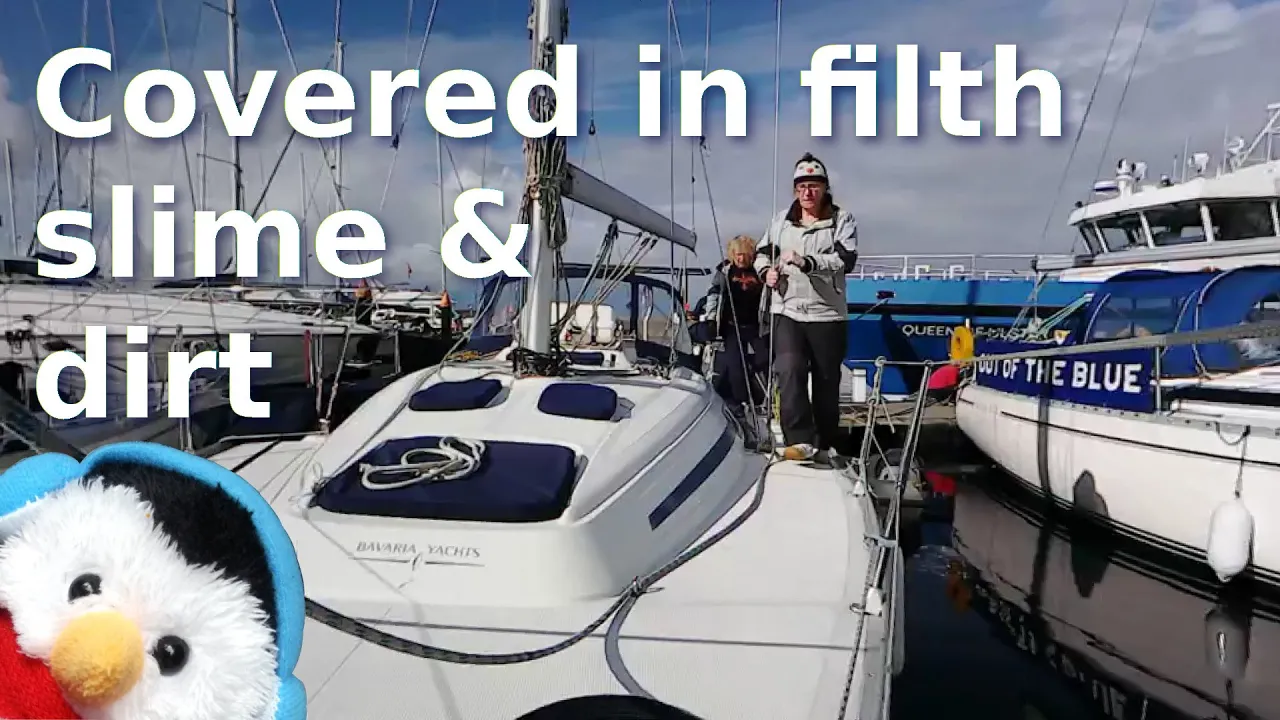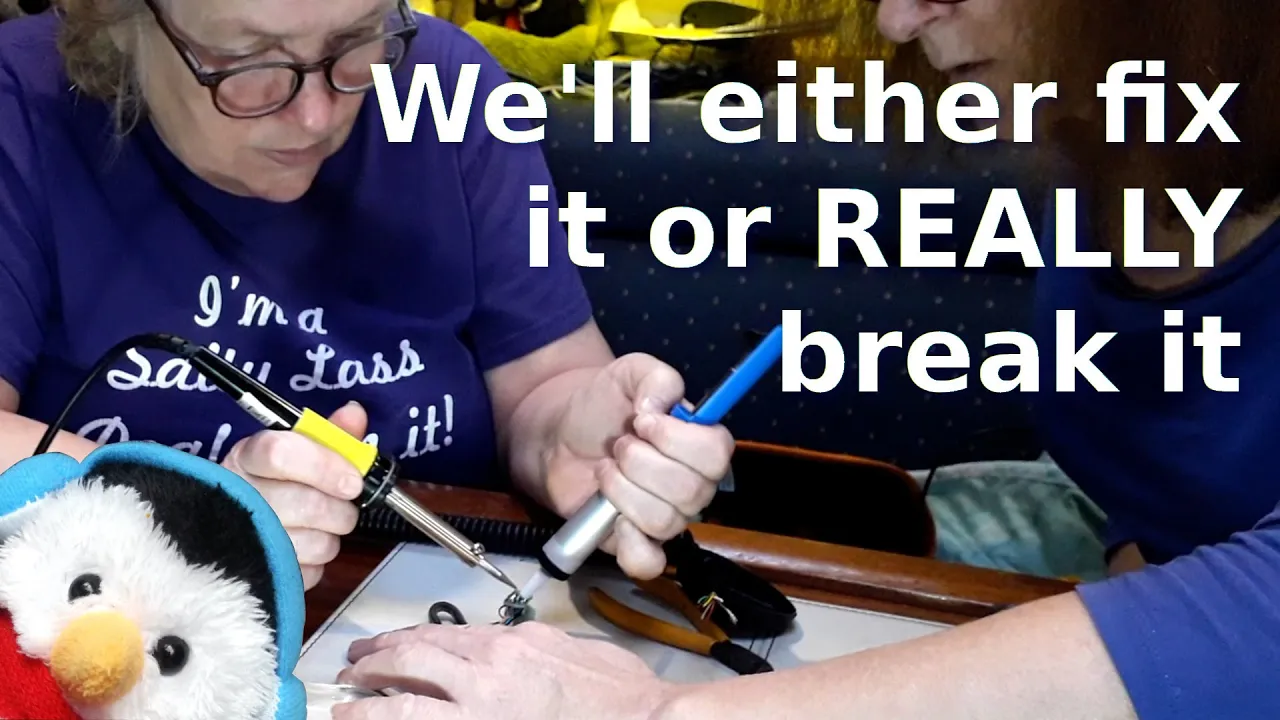As soon as the New Year hit I was off the boat visiting friends and family. I love catching up with everyone, but it means leaving Beverley alone and I think she ended up talking to herself as well as doing other necessary jobs like putting grit on the pontoons and varnishing parts of the wood work.
On the 7th January, we caught Beverley putting salt out on the pontoons. At Bangor the staff put out salt on the main pontoons, which means that the fingers are up to ourselves. We sometime add a little to the main pontoon especially where we turn to go up the finger.
While I was away Beverley decided to do the jobs which are difficult to do when I am around and that is because when you do jobs in the boat, you make mess, but on top of that she decided to do the varnishing as the volatiles in the varnish can really make me wheeze as I have asthma. So it was out with the sandpaper to get stuck in. The varnish degrades because of three things sun, damp and wear
- Sun - The area to the side of the companionway has really degraded because of the sun. It is clearly a lighter colour than all the rest of the woodwork
- Damp - We replaced all our stanchions last year because of small leaks. These leaks meant that the cupboards near the stanchions and the surfaces just below the stanchion were damp and the varnish in these areas were degraded as a result
- Wear - The varnish on our steps, not featured, and our chart table has really worn down because of wear. When this happens it is always best to add more varnish as soon as possible because then you only have a small job to to rather than a big one.
While Beverley was talking about damp, she talked about a few of the things that we use to keep damp down
- Dry mat - We use dry mat under the mattress, to make sure that air circulates under the mattress. This air circulation is what keeps the mould away from under your mattress. If you do decide to use this, think about the sides of the mattress and make sure that you have dry mat on the sides too
- Camper van insulation - We have this on all the sides of the boat where we can
- Hot water in the sink - As soon as you have washed up, pull the plug on the sink to minimise the amount of steam coming from the hot water
- Small dehumidifiers - We use these in our cupboards and other small areas where damp can form
- Electrical dehumidifier - This is by far and away the most effective way of removing water from the boat and we collect at least 2 or 3 pints every day, but we are living on the boat so we are producing a lot more water than people who are leaving their boats
- Keep the boat well ventilated - If the boat is ventilated then the air circulation will keep the mould down, it is one of the reasons that we keep the doors of the cupboards up when we are in a marina, so that there are no places where stale air can build up.
- Covers on windows - Adding a cover overthe window has really cut down the condensation around the windows
Viewer question of the week
One of our subscribers wanted to know what was better, a bought log or a log book you make yourself. We have used both
- Bought - Great as your first log book. Ours lasted about two years and was the RYA log book. Where it fell short was it had columns to do with the air pressure which we did not feel that we needed to record every hour. It also had waypoints that we have in our passage planning book so are not needed in our log book
- Home made - This works well for us as we have added a column for the engine so that we know what the engine is doing and the air pressure column is now for weather. It is also bigger A4 sized and having a free form style allows us to have two passages on a page. We have a template for this and it is in our resources













